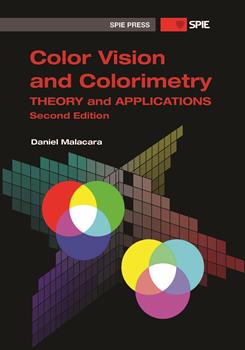|
The perceived color of an illuminated object depends not only on its intrinsic color or spectral reflectivity, but also on the power spectrum of the light source. In this chapter, we will study some of the most important light sources used in colorimetric studies. General descriptions of light sources can be found in many publications (Elenbaas, 1972; Eby and Levin, 1979; Malacara and Morales, 1988; LaRocca, 1995; IESNA, 2000). 2.2 Blackbody Radiation and Color Temperature Any nonmonochromatic light source can be characterized by its spectral power distribution, which is the total amount of power that it emits in a small unit interval of wavelength or frequency. Different curves are obtained in both of these cases, but the most frequently used is the power per unit of wavelength interval. A blackbody is one that has no color, that is, one that looks black because it absorbs all of the light that falls on its surface, such as a piece of carbon. A blackbody at the temperature of absolute zero (0 K on the Kelvin scale, or −273.15 °C) looks perfectly black, since it emits no light. If a blackbody is heated, it will become luminous, with a radiance and color that depends on the temperature. It looks red at about 1000 K (727 °C), yellow at about 1500 K (1227 °C), white at 4500 K (4227 °C), and bluish-white at about 6500 K (6227 °C). Further details are described in Chapter 5 in Fig. 5.10. Figure 2.1 shows how the spectral radiance and the color of a blackbody change with the temperature, as given by the well-known blackbody radiation law. Its spectral radiance L(λ) is given by (2.1) where h is Planck's constant, k is Boltzmann's constant, c is the speed of light, λ is the wavelength, and T is the absolute temperature. The wavelength at which the peak of radiation occurs is given by Wien's displacement law, which can be derived from the blackbody radiation law (2.2) and is represented by the red line in Fig. 2.1. Using this law, the temperature of an incandescent body, such as a star or an object in an oven, can be estimated from its color. |
|
|


